Zooming - December 2013
/The ‘zooming’ post for December includes pieces of Florida pictures (the first 5) and then pictures from Brookside (outdoors and inside the conservatory).
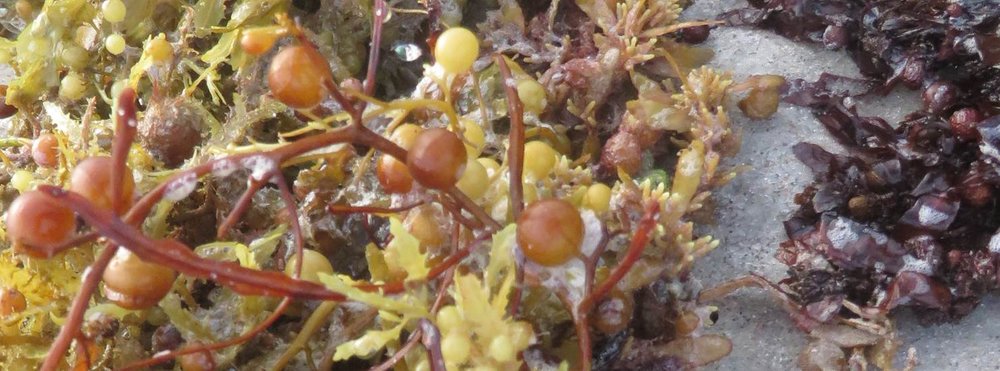
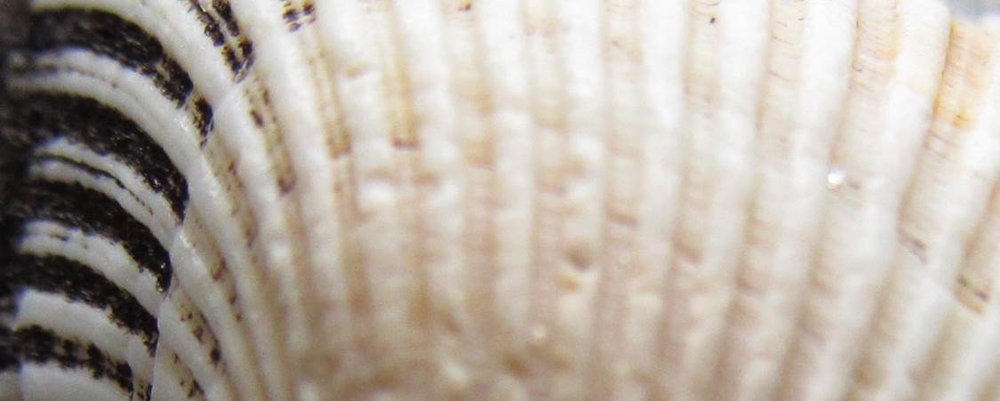

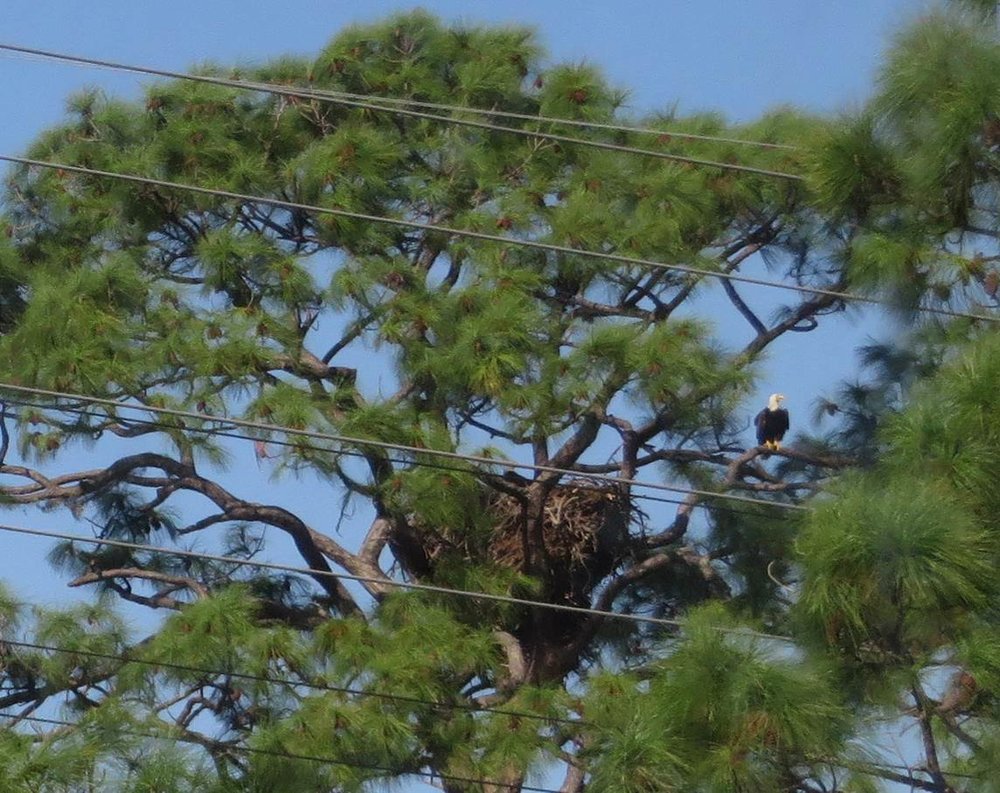
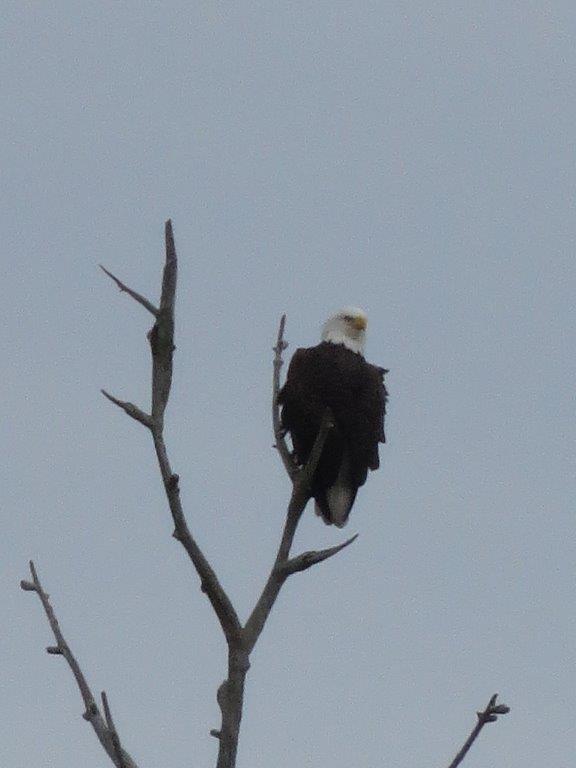 The bald eagles at Merritt Island National Wildlife Refuge are birds the come back when the heat of summer is gone. They arrive earlier than many of the other winter birds. The best viewing of the eagles with their nest is actually on the bus tour of the Kennedy Space Center rather than areas accessible in the wildlife refuge although there are some favorite snags in the refuge - just barely within viewing distance from the road - where the eagles like to survey their territory.
The bald eagles at Merritt Island National Wildlife Refuge are birds the come back when the heat of summer is gone. They arrive earlier than many of the other winter birds. The best viewing of the eagles with their nest is actually on the bus tour of the Kennedy Space Center rather than areas accessible in the wildlife refuge although there are some favorite snags in the refuge - just barely within viewing distance from the road - where the eagles like to survey their territory.
I can remember the first time I saw a bald eagle. It was about 24 years ago and at the Blackwater National Wildlife Refuge on the Eastern Shore of Maryland. The bird flew overhead as I held by baby daughter as we looked up from the visitor center parking lot.
Even though there are more bald eagles in the world now than 24 years ago, it’s still a ‘little celebration’ any time I see one!
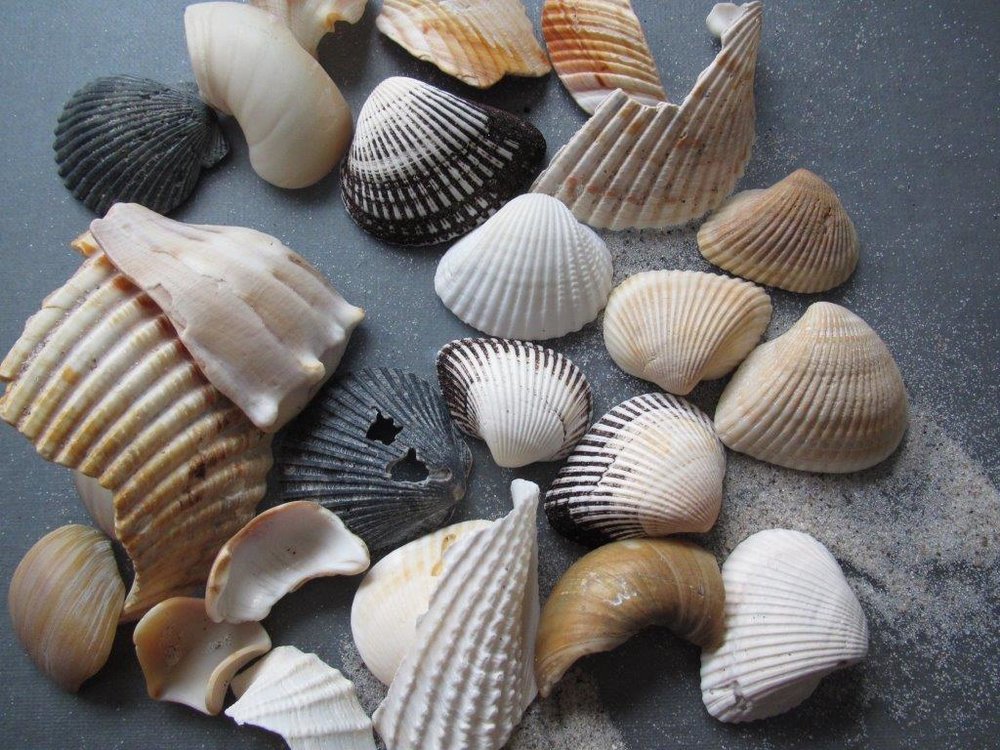
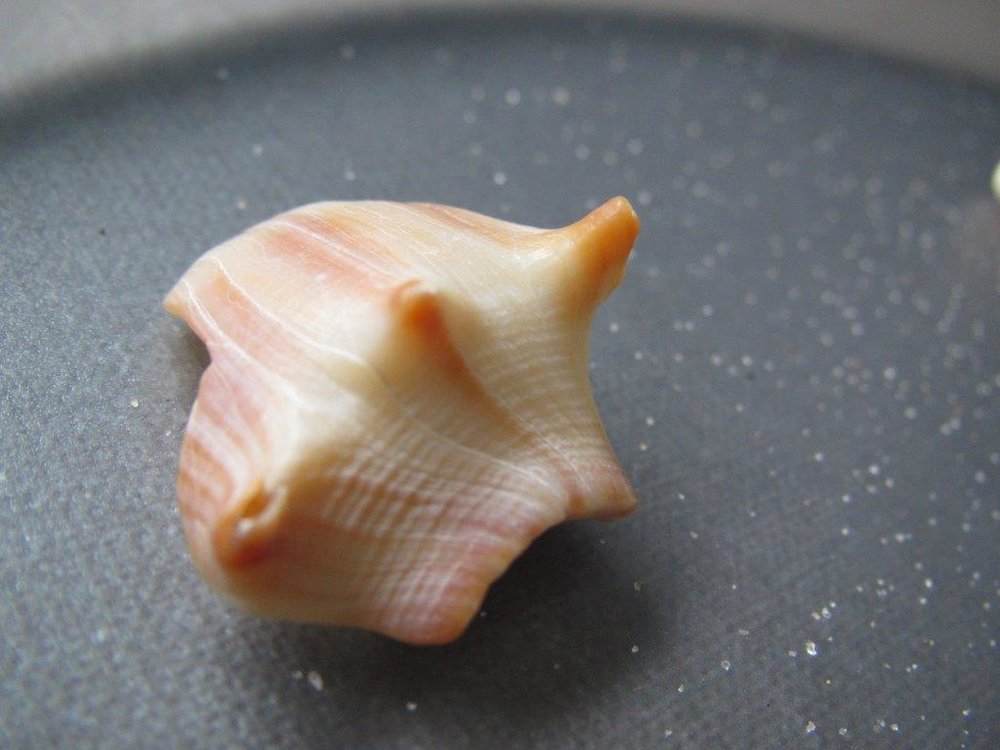 My favorite beach activity is picking up shells. Most of the time they are broken pieces of a form that sheltered a life in the sea. Sometimes they are lying on top of the sand and sometimes they bring a sand in their curves when I pick them up. It was too cool to want to wash them off in the waves in November so there was more sand than usual with the shells in my bag.
My favorite beach activity is picking up shells. Most of the time they are broken pieces of a form that sheltered a life in the sea. Sometimes they are lying on top of the sand and sometimes they bring a sand in their curves when I pick them up. It was too cool to want to wash them off in the waves in November so there was more sand than usual with the shells in my bag.
I always like to image the part of the shell that is missing - to complete the curves.
Sometimes it is as easy as imagining a mirror image that could complete the half into a whole.
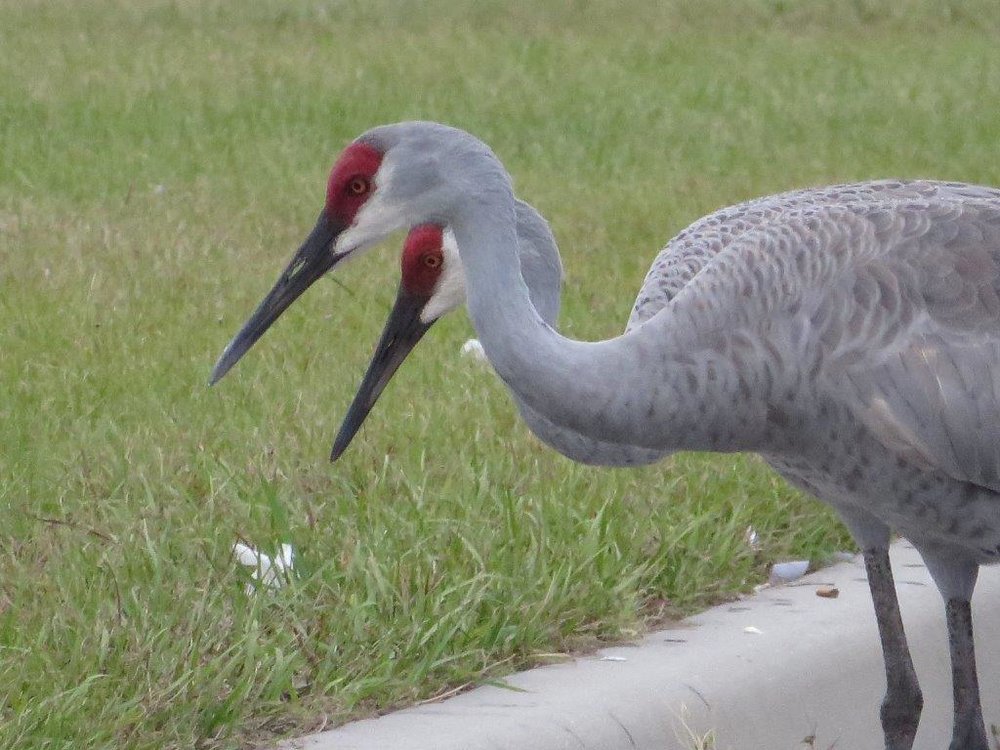
Sometimes spectacular birds are sighted in unlikely places. About an hour after we saw wood storks near the MacDonald’s parking lot before we got to Orlando, we saw Sandhill Cranes in the cell phone lot where we pulled in to wait for my daughter’s plane to arrive.
They did not seem bothered by the cars driving slowly and parking or pulling out. There was a mother with a young child walking in the parking lot. Neither the birds or the people made any sudden move; a comfortable distance was maintained.
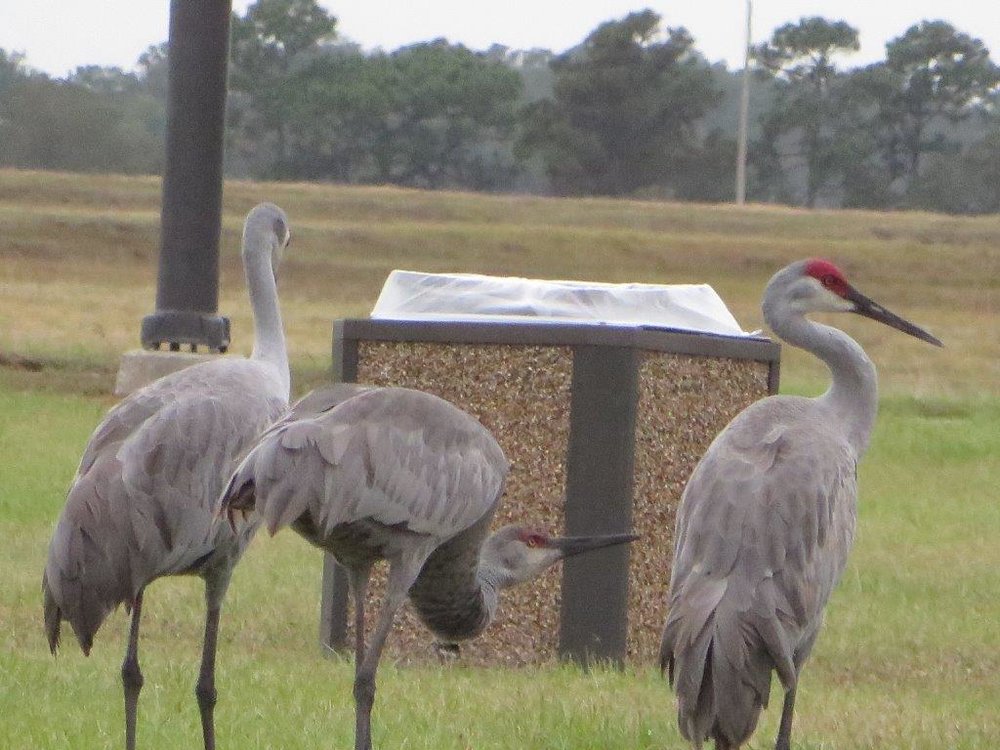

These are large birds and their different postures can make them appear very different. Compare the three birds in the two images below. They are the same three birds!

I posted about the tower at the Bok Tower Gardensyesterday. Today the focus is on the plants and a few animals. Lizards seemed to be everywhere and it was warm enough for them to be very active.

The squirrels were acclimated to people. This one listened to the carillon concert with us - keeping his back to us as he perched on a neighboring bench.
The slide show below shows a number of other features in garden: a metal Venus flytrap sculpture among tropical vegetation, oranges glowing in the sun, bees on an agave flower, a Monarch butterfly on orange and red flowers, coral stones used for paving with moss growing in larger indentions, a pineapple type plant, a spider web, the center of a cycad.

Bok Tower Gardens is on Iron Mountain in Florida near Lake Wales. It is surrounded by orange groves growing in the red-brown soil that gets it color from oxidized hematite.
The tower itself is on the summit of the mountain which at 295 feet above sea level is one of the highest points in peninsular Florida. The gardens were built by Edward Bok at his winter home in Florida. He was inspired by something his grandmother instilled in him. There is a small sign with the quote near the tower (see photograph to the left). He died in 1930 but the gardens and tower still keep the spirit of that goal alive. Enjoy the slide show below for a quick look at the tower itself.
There are grills with mosaics and stone sculptures and friezes. Birds and plants are popular topics in stone.

The grill work that is covered in mosaic adds additional colors to the tower. There are no regular tours inside the tower but there are enough doors and balconies visible from the outside to image some of the internal structure. The carillon is housed in the upper part of the tower and there are concerts scheduled a couple of times a day.
Even the top of the gate in the fence around the tower is decorated with bird images.

The tower is only the high point (physically) of the garden. The museum is informative, the food is pleasant, and the gardens are full of lush plants (and spiders and birds and squirrels). I am planning two additional posts from our visit to the gardens in November: one on tiles and fountains and another featuring the plants. There are many plants in this outdoors in this garden that we only in conservatories in Maryland.
The two types of herons that were easiest to spot in Florida when we were there in November were the Great Blue Heron and the Tricolored Heron (formerly known as the Louisiana Heron).
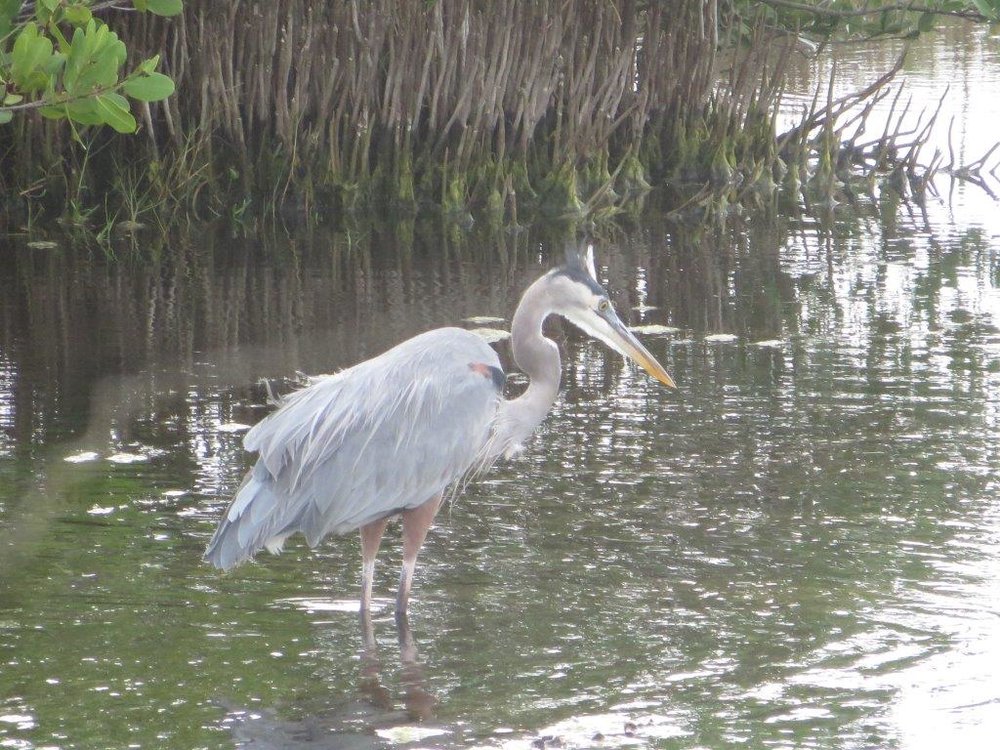

The Great Blue Heron is a bird we see in Maryland as well and I’ve posted pictures of it before. They look the same everywhere. Some of these pictures include mangroves - a sure indication that these birds are much further south than Maryland.
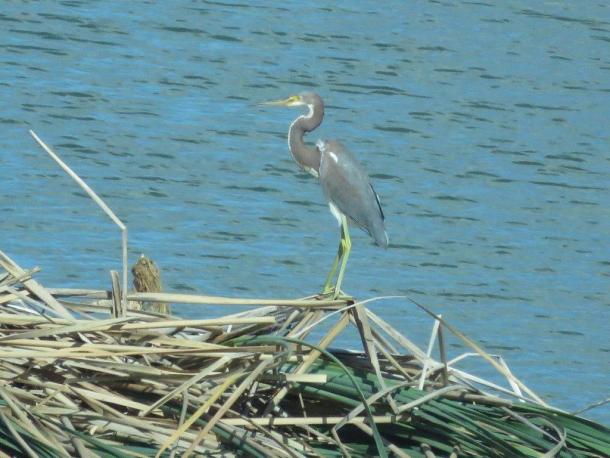

The Tricolored Herons were new to me. Their range is much further south than Maryland; they thrive throughout Florida. These herons run in the water as they pursue their prey - very different behavior than the patient stalking style of the Great Blue Heron.
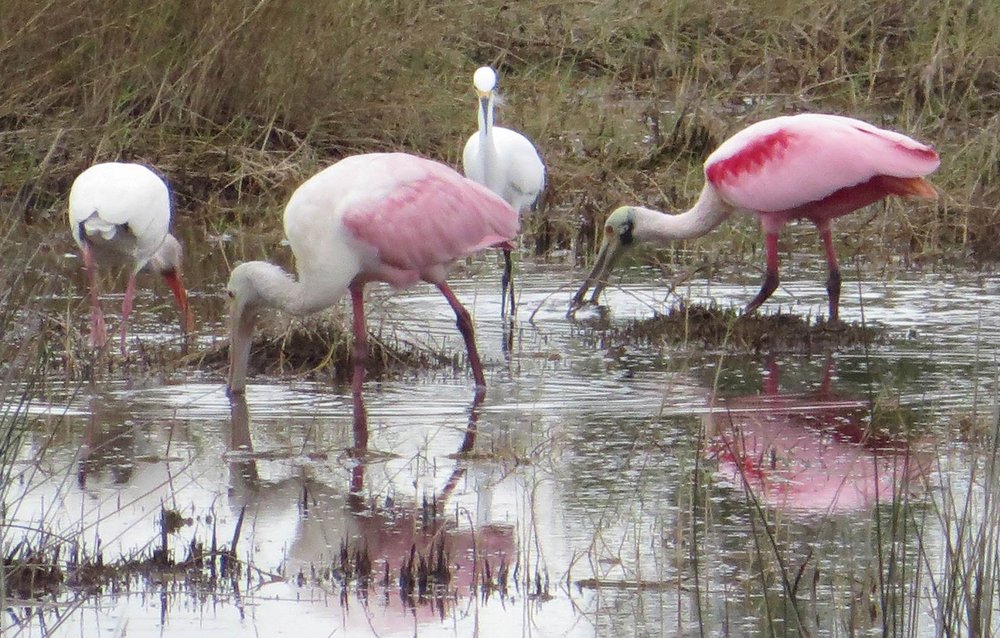
Roseate Spoonbills are easy to spot because of their color and size - and then fascinate with their unusual bill and the way they feed. In November at Merritt Island National Wildlife Refuge they gathered with other birds to feed in the pools where there lower water level concentrated the small animals and the spoonbill sifts through the mud to find them. The pools are so rich that the spoonbills were with egrets and ibis.
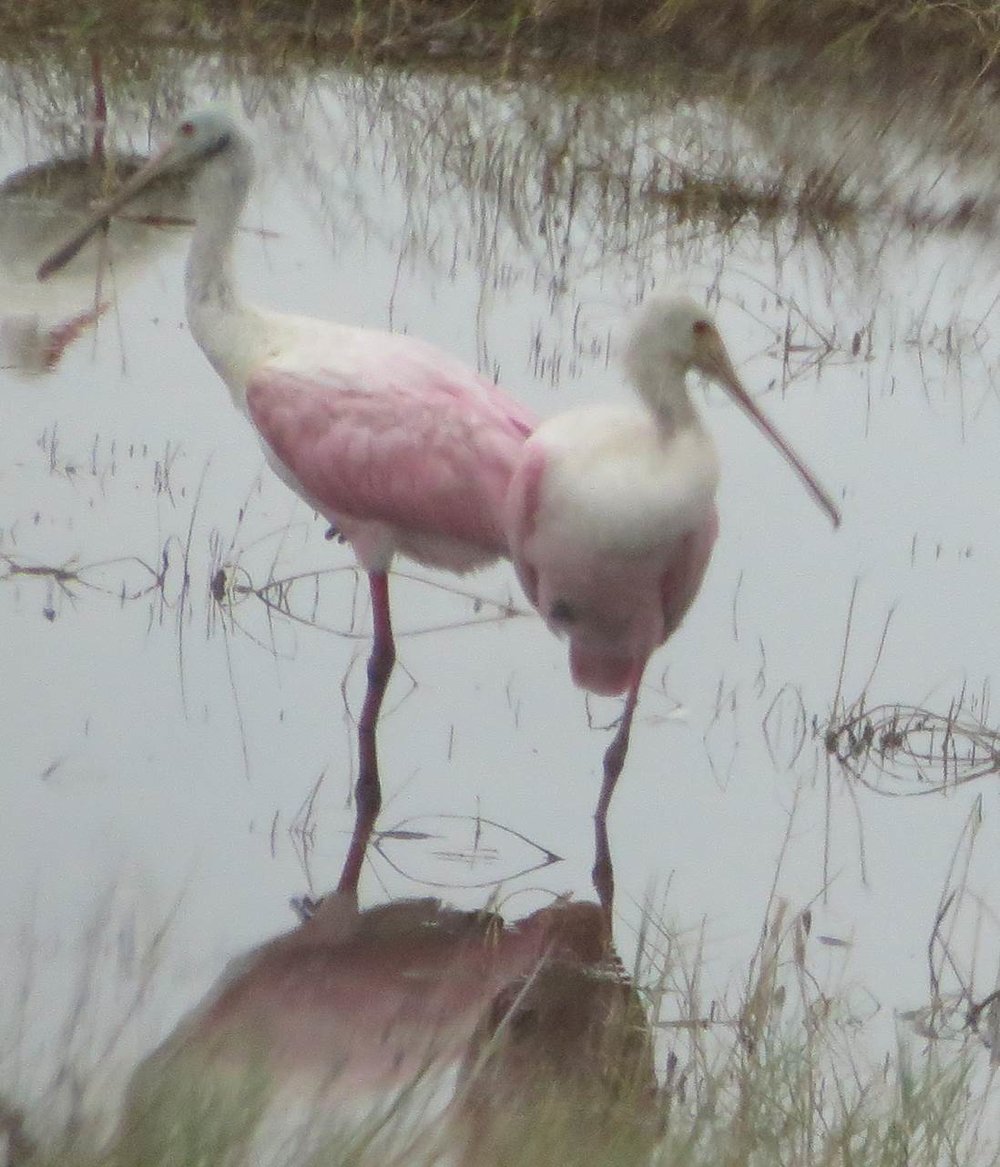
 Alligators were easy to spot when we were in Florida in November. The biggest ones were at the Merritt Island National Wildlife Refuge. They loll on the banks of the waterways. It’s easy to image that they are smiling to lull their prey into a fall sense of security. In reality they have eaten recently and are not likely to move much from their comfortable spot.
Alligators were easy to spot when we were in Florida in November. The biggest ones were at the Merritt Island National Wildlife Refuge. They loll on the banks of the waterways. It’s easy to image that they are smiling to lull their prey into a fall sense of security. In reality they have eaten recently and are not likely to move much from their comfortable spot.
 In a small ditch next to the parking lot of the Kennedy Space Center’s Visitor Complex, there was a small alligator. At first his eyes were closed but as more people walked by his place, his eyes slowly opened. These animals have an ancient look about them…and the eyes fit with the rest of their appearance. There is an emptiness about the eyes; how is alligator consciousness different (or similar) to our own?
In a small ditch next to the parking lot of the Kennedy Space Center’s Visitor Complex, there was a small alligator. At first his eyes were closed but as more people walked by his place, his eyes slowly opened. These animals have an ancient look about them…and the eyes fit with the rest of their appearance. There is an emptiness about the eyes; how is alligator consciousness different (or similar) to our own?
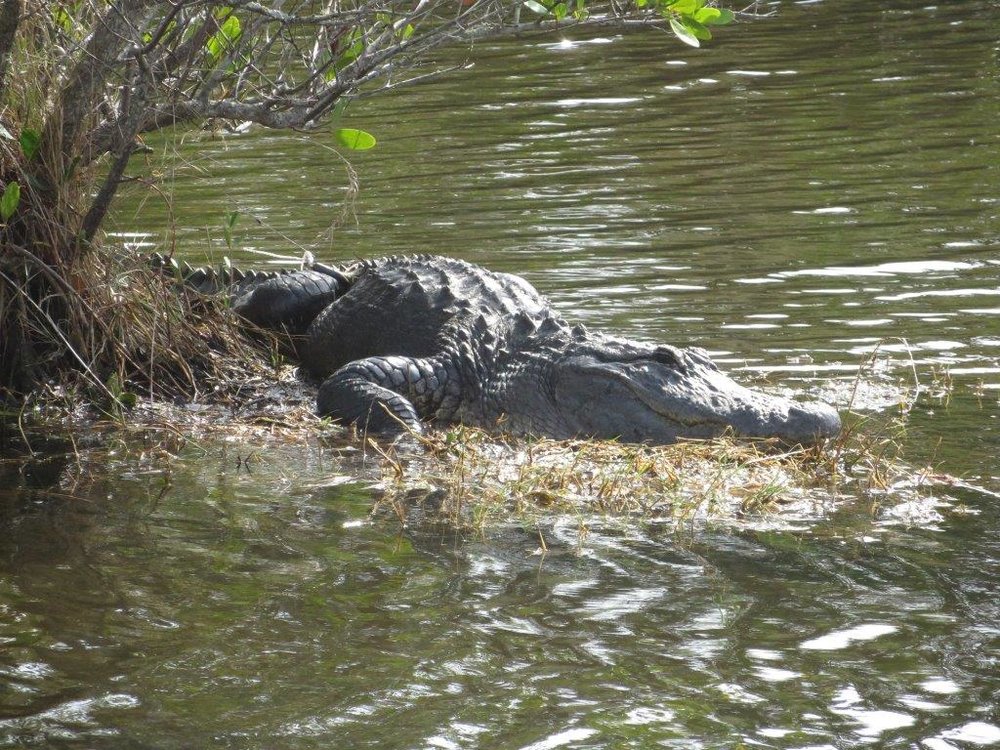 Sometimes an alligator looks particularly well feed. Doesn’t the middle of the large one above look particularly rounded? I wonder what he ate.
Sometimes an alligator looks particularly well feed. Doesn’t the middle of the large one above look particularly rounded? I wonder what he ate.
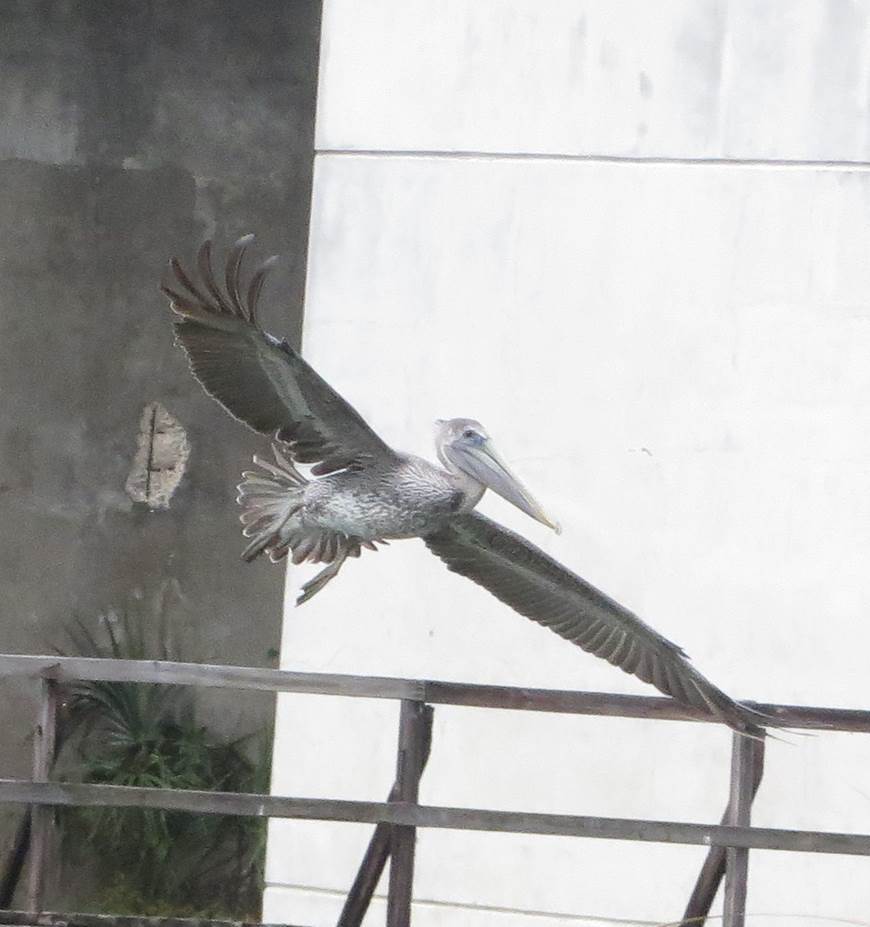 The Manatee Observation Deck at the Merritt Island National Wildlife Refuge was a great place to see pelicans; there were a lot of them all three times we were there in mid-November. The birds have large wingspans and, with photography, it is easy to capture the way the long feathers at the end curl in flight.
The Manatee Observation Deck at the Merritt Island National Wildlife Refuge was a great place to see pelicans; there were a lot of them all three times we were there in mid-November. The birds have large wingspans and, with photography, it is easy to capture the way the long feathers at the end curl in flight.
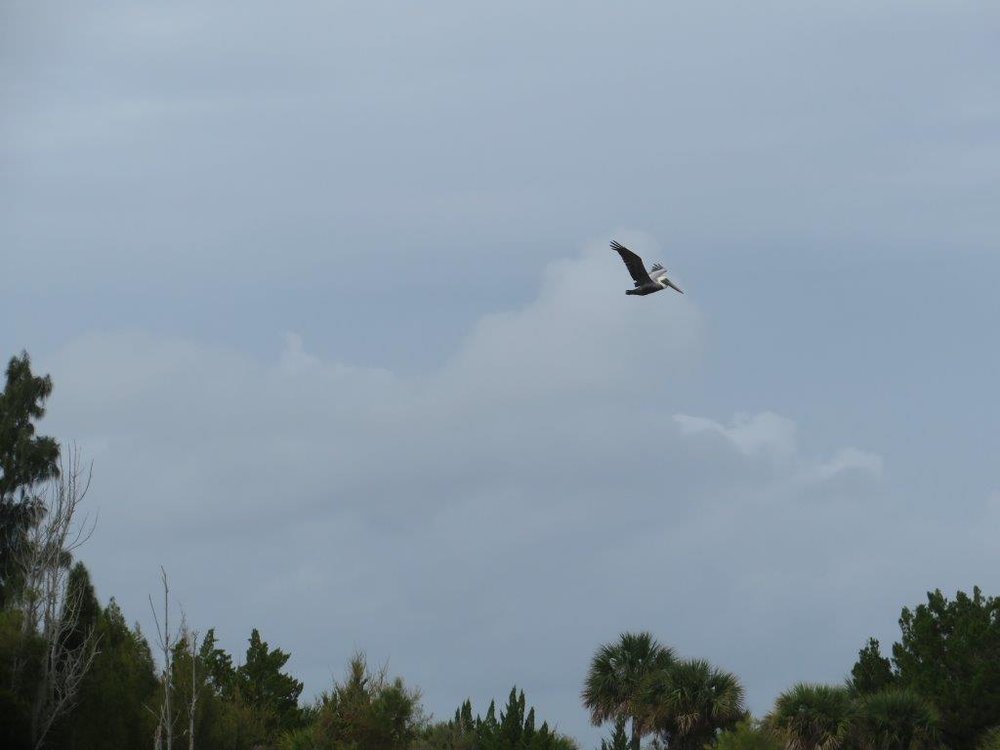 Their heads are up above the plane of their wings when they fly - like herons and egrets. The head looks very large with the length of the bill and the pouch. They look ancient.
Their heads are up above the plane of their wings when they fly - like herons and egrets. The head looks very large with the length of the bill and the pouch. They look ancient.
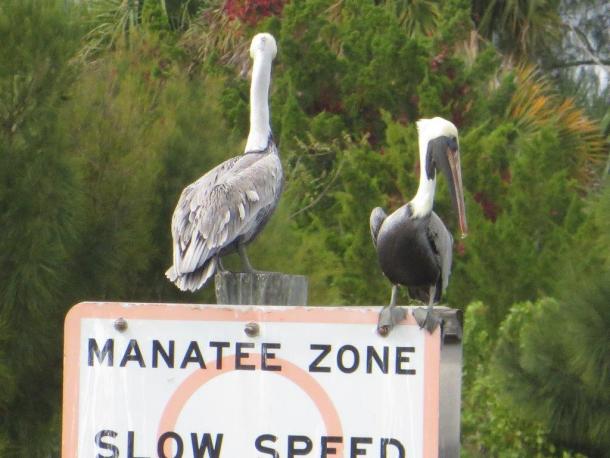 At the observation deck there were adults with distinctive coloring
At the observation deck there were adults with distinctive coloring
 And more ‘brown’ mono-colored juveniles.
And more ‘brown’ mono-colored juveniles.
Unfortunately - we only saw a manatee once during our week in Florida and it was at Bair Cove boat ramp on the other side of the Haulover Canal from the Manatee Observation Deck. It was a ‘blob’ just under the water….so I didn’t get a picture good enough to share.

We were at Cape Canaveral on November 18th for the Maven (Mars Atmosphere and Volatile EvolutioN) Launch. The day before the launch, we toured the Vehicle Assembly building and saw the launch pad with the Atlas V rocket, Centaur, and Maven (at the top) from the fence surrounding it.
Our viewing location for the launch was on the causeway that crosses the Banana River. We boarded the bus about 3 hours before the launch, ate a picnic lunch sitting on beach towels (fortunately we were not in an area with fire ants), and used an umbrella for shade when it got a little hot. The clouds built up right before the launch time…but not enough to stop the launch at the very beginning of the planned window. The slide show below includes some selected pictures. They don’t capture the most stunning part of a launch: the sound. It is sound that is felt as much as heard … different from any other experience I’ve had … and well worth the effort! A launch is a celebration of accomplishment; the mission is built and on its way. It will be months before the science phase of the mission starts when it gets to Mars.

The weather was too cool and windy to swim, so we enjoyed watching birds on the beach instead….at Canaveral National Seashore, Cocoa Beach and the beaches near Melbourne.

The wind made for some ruffled feathers. The terns would quickly turn into the wind and preen to resume their usual sleek look.

Or sometimes they just tolerated their ‘punkish’ look.
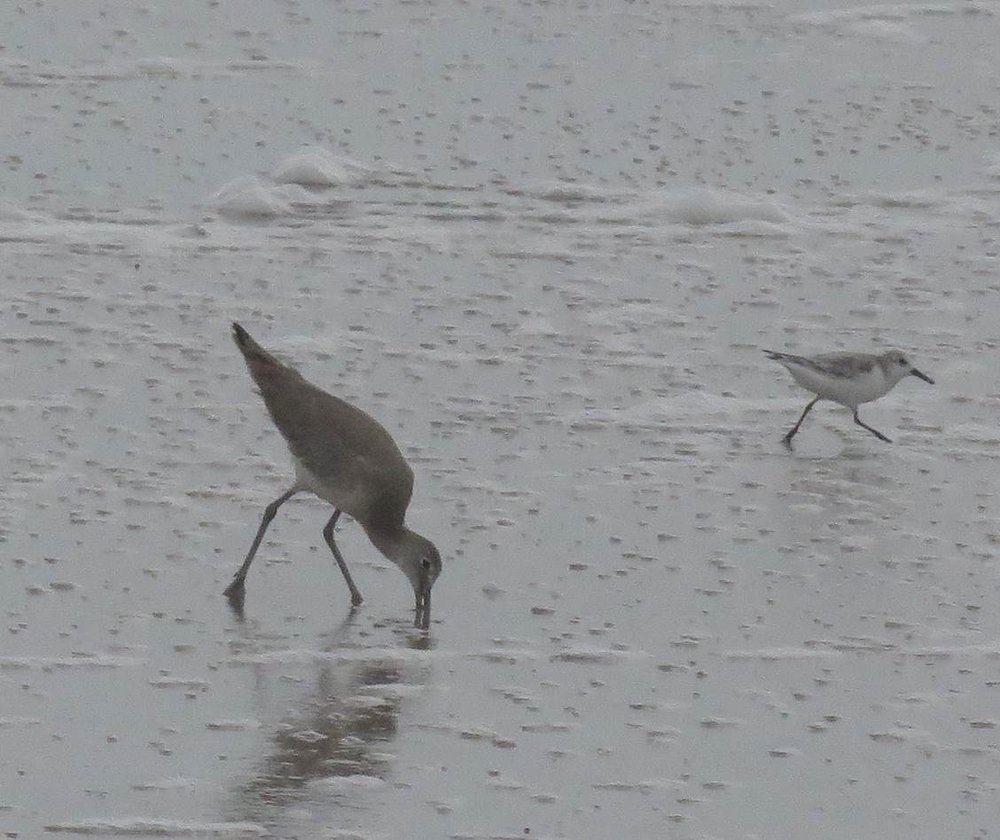
A willet and sanderling fed side by side on the goodies left from the waves rolling in.
And the best of the rest are in the slide show below!
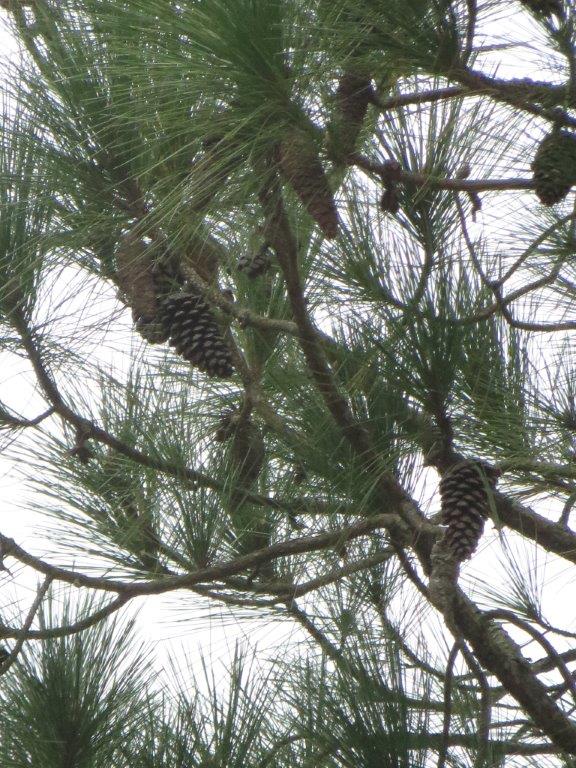 Our destination was Melbourne FL and we did the calculation between flying/car rental and driving - deciding that for two people without significant time constraints, it was less expensive to drive. The drive from Maryland to Florida is a trek on I-95. One passes around Washington DC and Richmond VA and then I-95 becomes a highway that misses any major city. I had thought we might see some fall color as we traveled southward; there was a little in Virginia but by the time we got to North Carolina, the pines dominated the roadway. There were miles of them. Sometimes there was a cotton field visible along the highway. Once past the Roanoke Rapids, there were more swamps and broad rivers. It was still sweat shirt weather all the way from Maryland to South Carolina where we stopped the first night.
Our destination was Melbourne FL and we did the calculation between flying/car rental and driving - deciding that for two people without significant time constraints, it was less expensive to drive. The drive from Maryland to Florida is a trek on I-95. One passes around Washington DC and Richmond VA and then I-95 becomes a highway that misses any major city. I had thought we might see some fall color as we traveled southward; there was a little in Virginia but by the time we got to North Carolina, the pines dominated the roadway. There were miles of them. Sometimes there was a cotton field visible along the highway. Once past the Roanoke Rapids, there were more swamps and broad rivers. It was still sweat shirt weather all the way from Maryland to South Carolina where we stopped the first night.
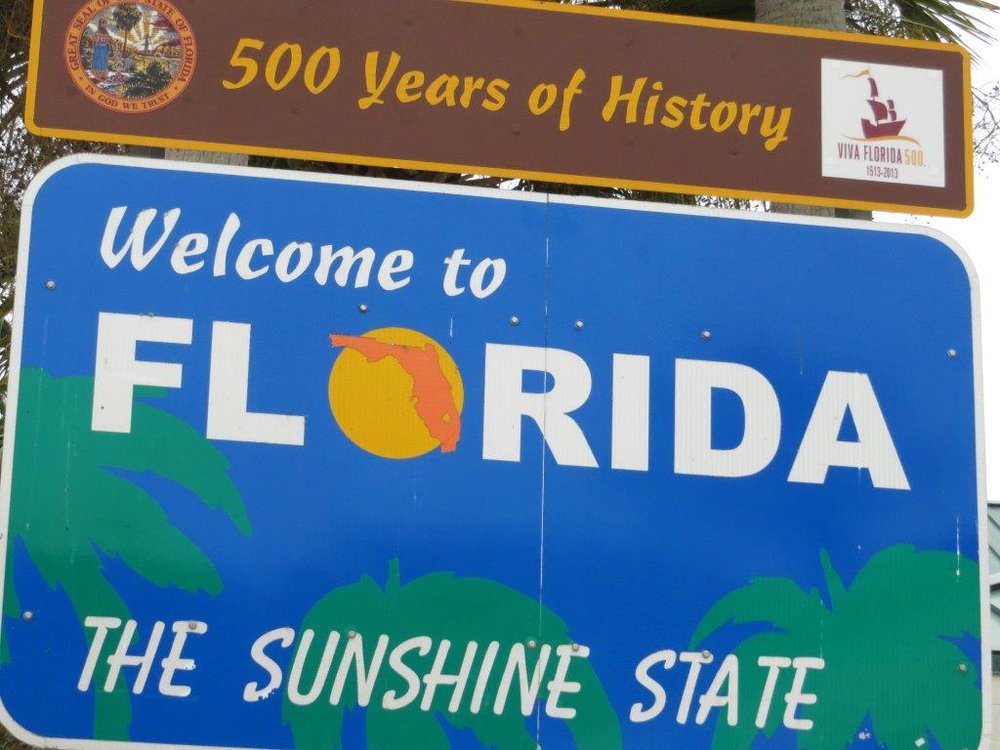
 By the time we got to Florida, it was warm and wet. I enjoyed the dolphin sculpture at the welcome center. Since it was raining, we stopped for lunch at MacDonald’s rather than picnic.
By the time we got to Florida, it was warm and wet. I enjoyed the dolphin sculpture at the welcome center. Since it was raining, we stopped for lunch at MacDonald’s rather than picnic.
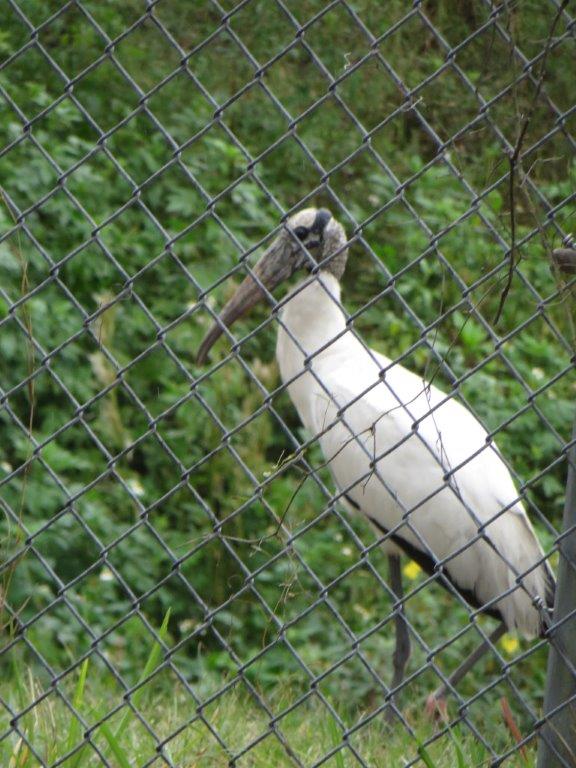 As we got out of the car the rain slowed down and I noticed two wood storks on a grassy area next to the parking lot. What a great way to start out our week in Florida! I’ll be posting more about our time in Florida over the next few weeks.
As we got out of the car the rain slowed down and I noticed two wood storks on a grassy area next to the parking lot. What a great way to start out our week in Florida! I’ll be posting more about our time in Florida over the next few weeks.
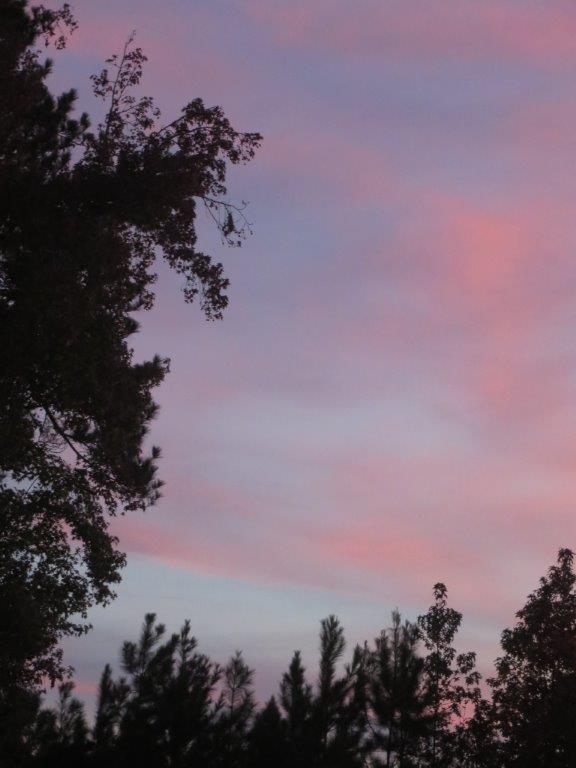 The road trip to Florida included a return trip too. On the way back I captured the sunrise in Georgia. We were up early for a long day of driving to get back to Maryland.
The road trip to Florida included a return trip too. On the way back I captured the sunrise in Georgia. We were up early for a long day of driving to get back to Maryland.
Celebrating the whole of life....
Thanks for visiting my blog! Enjoy the photo picks from last month:
Copyright © 2024, Gwen Morrison. All rights reserved.
Powered by Squarespace.